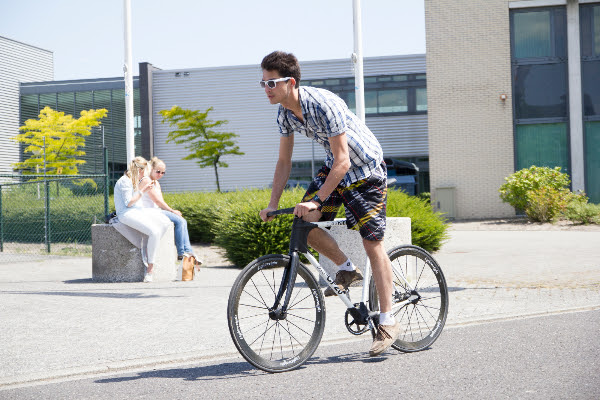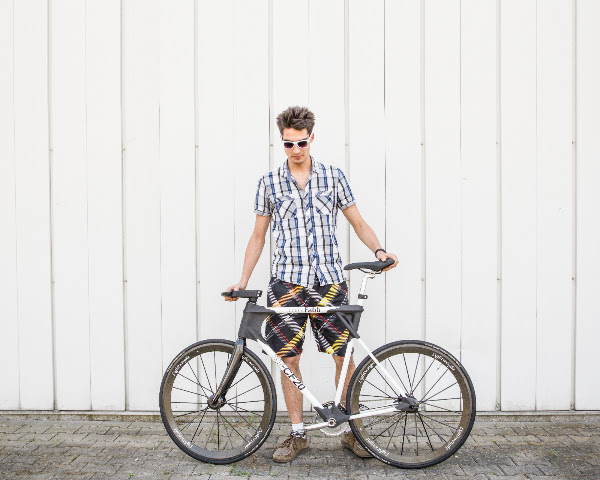Nine 3D printed lugs to connect standard tubing in carbon, titanium, aluminum or bamboo: that is all it took for colorFabb intern Stephan Schürmann to create a beautiful and functional racetrack bike using colorFabb’s newest carbon fiber-based filament, the XT-CF20. The files are now available on the three most popular 3D model databases (Thingiverse, GrabCAD, YouMagine), which means that you can – and most definitely should – try it at home.
The colorFabb racetrack bike came out of a regular desktop 3D printer at colorFabb‘s print lab. The Dutch manufacturer’s XT-CF20 filament integrates as much as 20% carbon fiber to the polymeric blend to add strength and stiffness to the 3D printed parts, yet it can be used with most desktop 3D printers.
Developed as a source of inspiration to show other engineers what can be achieved with desktop 3D printing, the bike’s design proved to be strong enough and acceptably light. The strength of the bike frame has been tested with a FEM analysis and, as seen in the video, in real life use. The bike concept is focusing on printing functional parts that will be mechanically loaded and the XT-CF20 offered a sufficient stiffness/elongation ratio to guarantee this quality.
As shown by other professional projects which have already made use of metal 3D printing for lugs and bolts, 3D printing enables bike designers to achieve three goals: higher personalization (in terms of size), more beautiful designs, and topological optimization of weight and structural integrity. Working with composite plastic parts focuses mainly on customizing the design before 3D printing it in order to preserve the best ergonomics.
ColorFabb also pointed out that the huge freedom of forms and unique features in the design possible with 3D printing has been used to implement a new kind of adhesive distribution system. With this technique one can assemble the bike and add a polyurethane adhesive which distributes itself to the right places, without having to get one’s hands dirty in the assembly process. Another advantage – since the designs have already been released as a free download – is collaborative open source development. It will be interesting to see what other optimizations users will come with.





